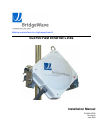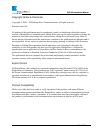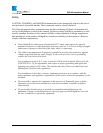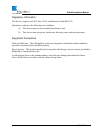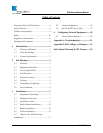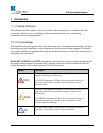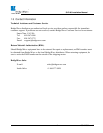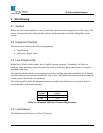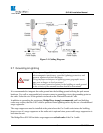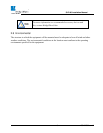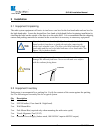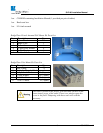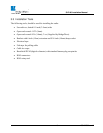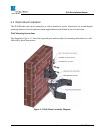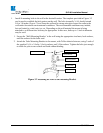
TM
SLE100 Installation Manual
4 590-00532, rev A
The SLE100 provides highly reliable all-weather operation at half-mile distances anywhere in the
USA and Canada.
2.5 Antenna Location
The optimum location for the antennas must be determined. The ideal location should provide for ease
of erecting and mounting the antenna, as well as unimpeded Line-Of-Site (LOS) to the other site. The
following factors should be taken into account:
• Type of mounting—wall or pole
• Location where the CAT5 cable wiring will enter/exit the building
• Length of cable runs (not to exceed 100 meters, 328 feet)
• Grounding connection points
• Obstructions
• Accessibility
2.6 Cabling
The installation site should be inspected to determine the run paths for the Cat5 copper cable from the
radio equipment to the surge arrestor and PoE Injector termination points. Locations for roof
penetration should be identified. The routing and securing of all cables should conform to all
applicable codes and requirements. Depending on the likelihood of damage due to foot traffic or
equipment movement, cabling conduit may be required. The maximum cable run length as specified
for the equipment being installed must not be exceeded.
Each SLE100 radio includes a 100-240 VAC power adaptor suitable for indoor operation that
converts the AC voltage from the standard electrical outlet in the wall to 48 volts DC.
The Cat5 cable that is used outside the building must be outdoor (plenum) rated (i.e., weather-
protected) or installed in applicable conduit.
The maximum end-to-end Cat5 cable run from network equipment through the PoE Injector and to the
SLE100 radio unit is 100 meters.
Figure 2-1 provides a diagram detailing the equipment and cabling found on a typical installation of
BridgeWave’s SLE100 60GHz radio equipment:



